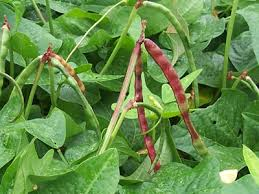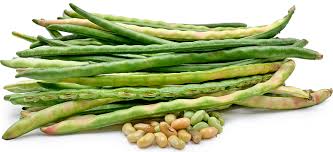In the hot, humid climate of Alabama, where spring is fleeting and summer stretches long with over 250 frost-free days, crowder peas (Vigna unguiculata) became a garden staple. Unlike typical garden peas, which are prone to aphid infestations, crowder peas thrive in the warmth and humidity, offering a reliable harvest.
One variety I grew regularly was the ‘Pinkeye Purple Hull,’ a dependable choice with easy-to-shell pods that turn dark purple when ripe, taking the guesswork out of harvest. I also enjoyed growing heat-tolerant heirlooms like ‘Red Ripper,’ which would climb a trellis and continue producing into the late summer. Crowder peas, often referred to as southern peas or cowpeas, come in a variety of colors and growth habits, making them a versatile crop that adapts well to warm climates.
These peas are also incredibly nutritious, with a protein content hovering around 25%, earning them the short-lived title of “protepeas” in the 1980s. As a summer cover crop, crowder peas not only provide a reliable food source but also help improve soil health by shading the soil, suppressing weeds, attracting beneficial insects, and fixing nitrogen.
Yard-Long Beans: Thriving in Cooler Climates
After moving to a cooler climate, I assumed that crowder peas wouldn’t fare well in my new mountainous garden. I also doubted that yard-long beans (V. unguiculata ssp. sesquipedalis) would be any more successful. However, I was proven wrong when I saw a thriving display at the Chicago Botanic Garden, which only has a 170-day frost-free season—similar to what I experience in my garden.
Intrigued, I began experimenting with yard-long beans, which produce a few beans per pod but can grow up to 18 inches (46 cm) long. I had success with several varieties, including the green-podded ‘Orient Wonder,’ but my favorite by far is ‘Red Noodle.’ These beans retain their deep purple-red color after cooking, making them a striking addition to summer stir-fries. I also blanch and freeze them, adding bite-sized pieces to winter soups and casseroles.

Gardening Benefits: Crowder Peas and Yard-Long Beans
Both crowder peas and yard-long beans are native to western Africa, where they developed natural defenses against pests, diseases, and weeds. Their glossy leaves shed water, helping limit disease, and their roots and leaves contain substances that discourage weed growth.
Both plants feature extrafloral nectaries—special glands that excrete sugary substances to attract ants and wasps. These insects help defend the plants by keeping harmful pests at bay, and as a result, both crowder peas and yard-long beans are relatively pest-free in Northern Hemisphere gardens.

Crowder peas are especially beneficial when used as a cover crop. When planted alone or alongside other grasses like oats, they thrive without attracting many pests. I often plant crowder peas as a quick midsummer cover crop, pulling them up or chopping them under while they’re still young. The nitrogen stored in the roots is released back into the soil, enriching it for the fall crops like leafy greens, which don’t need extra fertilizer.
In summary, crowder peas and yard-long beans are not only productive and nutritious but also offer practical benefits for garden health. Whether used for food or as a cover crop, these summer stars can improve your garden’s soil and reduce the need for additional fertilization.
